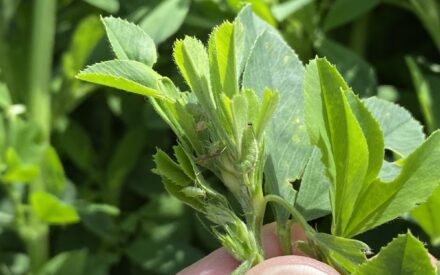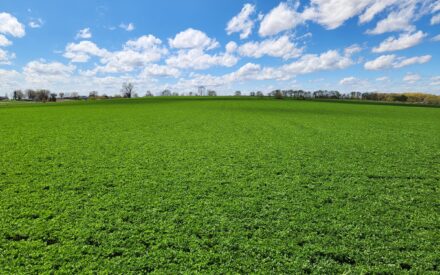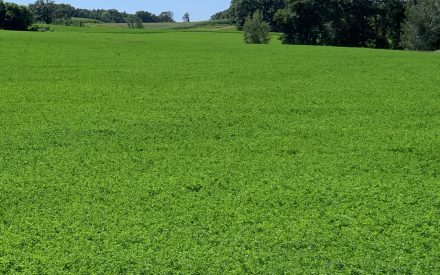When significant winter alfalfa stand damage occurs consider the following. The situations vary from low spots only in fields to significant portions of the fields.
I recommend the following:
- First, make sure that “dead” spots are actually dead and not just delayed:
- Dig a few plants and check the top 4 inches of the taproot for color and turgor. It should be an off-white (like the inside of a potato) and turgid (not ropy). If plants are off-white and turgid they are alive and just delayed.
- Also check fields that are putting out small shoots. Sometimes the dying plants will produce shoots 1 to 2 inches tall and then die. Again, dig a few plants and look for off-white and turgid taproots.
- Determine the percentage of field affected and manage accordingly:
- If small percentage, simply go over the affected areas with a drill as soon as possible and seed 10 lb/a with a 50/50 mix of Italian (annual) ryegrass and perennial ryegrass.
- If a moderate percentage of the field is affected and wanting to take first cutting and then reseed – immediately interseed Italian ryegrass (10 lb/a), take first cutting and then seed corn for maximum yield. An alternative in the southern half of the Wisconsin (especially if expecting dry conditions) would be to seed BMR sorghum-sudangrass (20 lb/a). Oats should be seeded for forage after Aug 1st.
- If a large percentage of the field is affected, seed corn or BMR sorghum-sudangrass before July 1st (20 lb/a). Corn will likely produce the most tonnage of any forage. Sorghum-sudangrass is a good choice if you expect dry conditions and/or above average temperatures (like last year). Alfalfa can be seeded into a different field at 10 to 12 lb/a with 6 lb/a tall fescue and 2 lb/a Italian (annual) ryegrass.

 ▶ Forage Insect Pest Update
▶ Forage Insect Pest Update ▶ Determining the Value of Standing Forage
▶ Determining the Value of Standing Forage First crop insect scouting in alfalfa
First crop insect scouting in alfalfa


